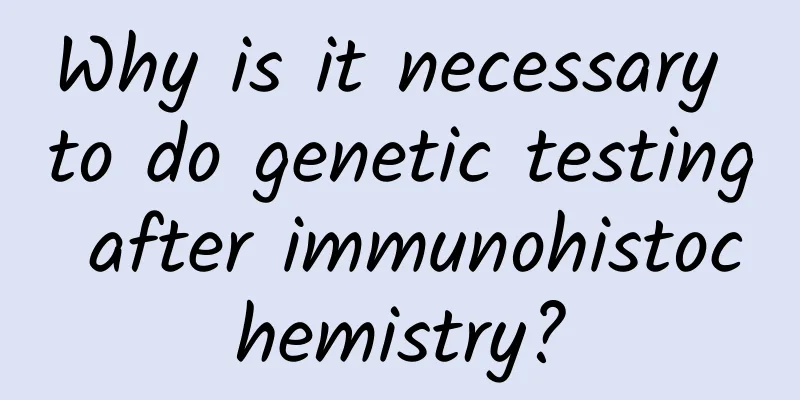Why is it necessary to do genetic testing after immunohistochemistry?

|
Although there are many detection methods, such as immunohistochemistry (IHC), fluorescence in situ hybridization (FISH), direct sequencing, real-time polymerase chain reaction (PCR), denaturing high-performance liquid chromatography (DHPLC), matrix-assisted laser desorption/ionization time-of-flight (MALDI-TOF) mass spectrometry, and next-generation sequencing (NGS), the most commonly used methods in lung cancer are IHC and NGS. So, what is the difference between the two? Why can't we just do one of the tests? IHC vs. NGS: Who is the "superhero" in the testing world? First, from a methodological perspective, IHC is like a sniper, accurately locating specific antigens in tissues or cells based on antigen antibodies, while NGS is more like a detective, determining the DNA sequence by capturing the special markers (usually fluorescent molecular markers) carried by the newly added bases during DNA replication. In terms of detection targets, IHC can detect fewer targets than NGS, and can only detect some gene mutations (such as ALK translocation, MET overexpression) or programmed death ligand-1 (PD-L1) overexpression. However, in addition to the above sites, NGS can also detect mutations in more sites such as BRAF, ROS1, NTRK1, MET, KRAS, HER-2 and FGFR3, including point mutations, amplifications, fusions, etc. Clinical guidance significance: Whose "battle map" is more detailed? IHC markers can guide the specific pathological classification of lung cancer in routine clinical practice (such as TTF-1, Napsin A, CK5/6, P63 and P40, etc.). In addition to covering a wider range of genetic variations, NGS is also used to describe the scale and type of differences that occur in tumors and their microenvironments. For example, TMB testing can have a certain predictive potential for the response to immune checkpoint inhibitors. NGS's "battle map" is more detailed and can help doctors develop more accurate treatment plans. Summary: IHC and NGS are indispensable! In general, IHC is a test at the protein expression level, and NGS is a test at the gene level. The two complement and verify each other. Therefore, after doing IHC, it is also necessary to conduct further genetic testing. |
<<: What do doctors mean by T, N, and M?
>>: What are the side effects of targeted therapy? How to prevent them?
Recommend
You must know the reason why leucorrhea turns yellow-green!
What happens if the leucorrhea turns yellow and s...
What happens if a woman loses her ovaries?
The ovaries are a very important part of the fema...
What are the benefits of calcium supplementation for women?
Calcium is the nutrient that our body needs most....
What is the color of mac923? Mac923 lipstick color test picture
mac923 is a new color number launched by Bullet-s...
Is stomachache also a sign of "involution"? This article explains many hidden symptoms!
1. Introduction Stomach pain, medically known as ...
Introduction to the manifestations of ovarian aging
Many women do not pay attention to their physical...
Are uterine fibroids serious?
Uterine fibroids are a very serious disease. If n...
Will having sex 25 days after abortion affect your health?
Many women need to undergo abortion due to unexpe...
How to get rid of bad breath in women
Every woman hopes to have an angelic face, a devi...
How many types of hair perms are there for girls
Walking on the streets, you will find that most j...
Can I get pregnant 10 days after my period ends? What should I pay attention to?
Most men and women know that they cannot have sex...
What causes the gestational sac to deform?
After the fertilized egg implants in the woman, i...
What to do if uterine fibroids are 1 cm
Uterine fibroids are a relatively common gynecolo...
How long does it take to get your period after an abortion?
Many times, when we have little energy, time, or ...
Maternal eczema pictures
After going through all the hardships to give bir...









